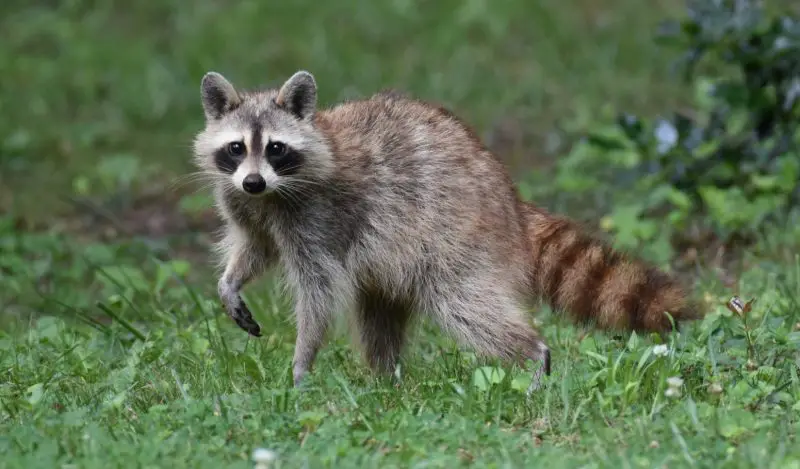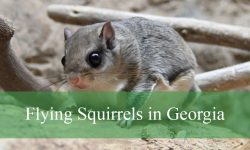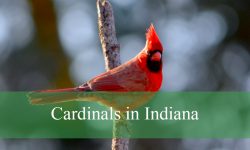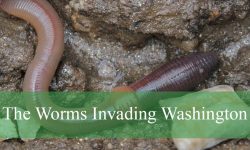When night falls across Maryland’s forests, suburbs, and shorelines, a clever little creature emerges to explore, forage, and outsmart nearly everything in its path—the raccoon. With its signature black “mask,” nimble hands, and mischievous curiosity, the raccoon (Procyon lotor) has earned both admiration and frustration from Maryland residents.
From rummaging through trash cans in Baltimore to washing clams along the Chesapeake Bay, raccoons are survivors, engineers, and troublemakers rolled into one. They’ve adapted to every habitat across the state, thriving where humans and nature intersect.
But there’s more to these masked bandits than meets the eye. In this detailed guide, we’ll reveal the secrets about raccoons in Maryland you didn’t expect—their intelligence, unique behaviors, ecological roles, and the surprising reasons they’ve become one of the state’s most adaptable mammals.
Understanding the Maryland Raccoon

Physical Characteristics
Raccoons are medium-sized mammals, weighing between 10 to 30 pounds, with a sturdy build, dense gray fur, and a distinctive black-and-white facial mask. Their ringed tails, typically marked with 5 to 7 dark bands, help them balance when climbing trees.
One of their most extraordinary features is their dexterous front paws, which act almost like human hands. Raccoons can unlatch locks, twist doorknobs, open containers, and even manipulate latches—skills that make them both fascinating and frustrating to homeowners.
A Native Maryland Resident
The raccoon is native to Maryland and is found in every county—from the mountains of western Maryland to the tidal marshes of the Eastern Shore. Their ability to adapt to nearly any environment has made them one of the most common mammals in the state.
While they prefer wooded habitats near water sources like creeks, ponds, and marshes, raccoons have also flourished in urban and suburban areas, where food is abundant.
The Behavior That Makes Them So Fascinating
Nocturnal and Opportunistic
Raccoons are nocturnal, meaning they’re most active after sunset. During the night, they roam through neighborhoods, forests, and wetlands searching for food. They have excellent night vision, sensitive hearing, and a sharp sense of smell—all essential tools for scavenging in the dark.
Intelligence and Problem Solving
Perhaps the raccoon’s most surprising trait is its intelligence. Studies have shown that raccoons can remember solutions to problems for over three years. They can recognize symbols, remember routes, and even manipulate complex mechanisms.
Wildlife biologists often compare their cognitive ability to that of small primates, which explains their remarkable adaptability in human-dominated landscapes.
Communication and Social Behavior
Although raccoons are generally solitary, females may form small family groups with their young. They communicate through over 200 distinct sounds, including growls, chirps, and purr-like noises. Their tails and body postures also express emotions such as aggression, curiosity, or fear.
The Maryland Diet: Nature’s Perfect Opportunist
What They Eat
Raccoons are omnivorous generalists—they eat just about anything. Their diet changes with the seasons and environment. In Maryland, their menu includes:
- Fruits and nuts (acorns, persimmons, berries)
- Small animals (frogs, fish, birds, eggs, and insects)
- Crabs and clams along the Chesapeake Bay
- Human food waste from trash bins and compost piles
Their habit of “washing” food in water, called dabbling, isn’t really washing—it’s a sensory behavior that enhances touch, allowing raccoons to better identify objects before eating.
Why They Love Urban Areas
Maryland’s raccoons have learned that human settlements are full of opportunities—trash cans, gardens, bird feeders, and pet food. Cities like Annapolis, Rockville, and Baltimore have thriving raccoon populations because of this endless buffet.
While this adaptability helps them survive, it also creates conflict with humans, as they raid garbage and nest in attics or crawl spaces.
Breeding and Life Cycle
Mating and Birthing
Raccoon mating season in Maryland typically begins in late winter (January–March). After a gestation period of about 63 days, females give birth in spring—usually April or May—to litters of 2–5 kits.
Mother raccoons, called sows, raise the young alone in tree cavities, hollow logs, or abandoned buildings. The kits are born blind and helpless but grow quickly, venturing out with their mother by summer.
Growing Up in the Wild
By fall, young raccoons learn to forage and climb independently. Most stay with their mother through their first winter before dispersing in spring. Adult males, known as boars, are territorial and roam larger areas, while females often remain near their birth territory.
Lifespan
In the wild, raccoons typically live 3–5 years, though some may reach 10 years. In captivity, without predators or disease, they can live much longer—sometimes up to 20 years.
Habitats Across Maryland
1. Forests and River Valleys
Raccoons thrive in wooded areas near water, particularly in western and central Maryland. They use hollow trees and logs as dens and forage along streams for crayfish and amphibians.
2. Wetlands and the Chesapeake Bay
Along the Chesapeake Bay and Eastern Shore, raccoons are often seen foraging for crabs, oysters, and clams during low tide. They are excellent swimmers and can hold their breath underwater for up to 40 seconds while hunting.
3. Suburbs and Cities
In urban areas, raccoons make dens in attics, chimneys, abandoned sheds, and storm drains. They adapt easily to city life, often following consistent nightly routes through backyards and alleyways.
Their urban survival skills have earned them the nickname “trash pandas”, an affectionate yet accurate description of their scavenging habits.
Secrets of Their Adaptability
Dexterity Like No Other
Raccoon paws contain more than 75 percent of the nerve endings found in human hands, allowing them to open jars, unlatch cages, and untie knots. This dexterity explains their ability to access food sources that other animals can’t reach.
Memory and Learning
Once a raccoon finds food in a certain location—like a trash can or bird feeder—it remembers that spot and returns night after night. They also learn from experience, avoiding traps or areas where danger was encountered before.
Intelligence in Urban Environments
In Maryland cities, raccoons display behaviors that mirror human problem-solving. They’ve been observed:
- Opening coolers or picnic baskets in parks.
- Navigating rooftops and fences to reach pet food.
- Using storm drains as travel routes.
Their creativity and persistence make them both survivors and occasional pests.
The Role of Raccoons in Maryland’s Ecosystem
Natural Pest Control
Raccoons help regulate insect and rodent populations by feeding on beetles, grubs, mice, and other small pests. Their scavenging habits also clean up carrion, reducing the spread of disease.
Seed Dispersal
By eating fruits and berries, raccoons help disperse seeds throughout forests and wetlands, promoting plant diversity. Their droppings often contain undigested seeds that germinate easily.
Balancing the Food Chain
As omnivores, raccoons play both predator and prey roles. They are hunted by foxes, coyotes, bobcats, and owls, forming an important link in Maryland’s ecological balance.
Human and Raccoon Conflicts
Common Issues
Maryland homeowners often report raccoons:
- Raiding garbage cans
- Nesting in attics or chimneys
- Damaging roofs and vents
- Stealing pet food or birdseed
These conflicts usually stem from easy access to food and shelter. Once raccoons associate a property with resources, they return frequently.
Safe and Humane Solutions
The Maryland Department of Natural Resources (DNR) advises against harming raccoons. Instead, homeowners should:
- Secure garbage bins with tight-fitting lids or bungee cords.
- Seal entry points like vents, chimneys, and crawl spaces.
- Bring pet food indoors at night.
- Trim tree branches near roofs to prevent easy access.
If raccoons are nesting indoors, professional wildlife control services can remove and relocate them humanely.
Diseases and Safety Concerns
Rabies
Maryland is one of the states where raccoon rabies is endemic. While not every raccoon carries the virus, rabies remains a major public health concern.
Avoid approaching or feeding raccoons, especially if they appear disoriented, aggressive, or active during the day—possible signs of infection.
Parasites
Raccoons can also carry parasites like roundworms (Baylisascaris procyonis), which are transmitted through feces. Proper sanitation and avoiding contact with raccoon droppings minimize risks.
Human Safety
Raccoons are not naturally aggressive toward humans. Most bites or scratches occur when people try to handle or corner them. Observing from a distance ensures safety for both species.
Fascinating and Little-Known Facts About Maryland Raccoons
- They can rotate their hind feet 180 degrees, allowing them to climb down trees headfirst.
- Raccoons are excellent swimmers, able to cross rivers and lakes with ease.
- Their scientific name, Procyon lotor, means “washer dog”, referencing their food-dipping behavior.
- They have over 40 teeth, capable of crushing shellfish and breaking nuts.
- A raccoon’s mask reduces glare at night, enhancing its vision—similar to how eye black works for athletes.
- They communicate using over 200 sounds, including purrs, hisses, and growls.
- Raccoons can remember food sources for up to three years.
- Maryland’s raccoons adapt to coastal and mountain environments equally well, one of the few mammals to do so.
Raccoons and Maryland’s Seasons
Spring
Raccoons emerge from winter dens and females prepare for birthing. They’re most active during this time, foraging heavily to regain lost weight.
Summer
Young raccoons learn survival skills. Activity peaks at night as they raid gardens and trash cans.
Fall
They gorge on acorns, corn, and fruits to build fat reserves for winter.
Winter
While not true hibernators, raccoons enter a state of torpor, sleeping for days or weeks during cold spells but waking to feed during mild weather.
Myths and Misconceptions
Myth |
Truth |
|---|---|
Raccoons wash their food. |
They dabble to enhance their sense of touch, not cleanliness. |
All raccoons carry rabies. |
Only a small percentage are infected. Most are healthy. |
They are dangerous to humans. |
Only if cornered or provoked. They prefer to avoid conflict. |
They only live in forests. |
They thrive in urban areas as well. |
Raccoons can’t survive cold winters. |
They adapt by slowing activity and using insulated dens. |
Conservation Status
Population Health
Raccoons in Maryland are abundant and stable. In fact, populations are increasing in many areas due to urban expansion and reduced hunting pressure.
Hunting and Management
Raccoons are classified as furbearers in Maryland. Regulated hunting and trapping seasons, overseen by the DNR, help manage populations while supporting sustainable use.
Trappers value raccoon pelts, while hunters help control numbers in agricultural areas where they damage crops like corn.
Coexistence
As human expansion continues, peaceful coexistence is key. Understanding raccoon behavior allows communities to appreciate their role in the ecosystem while preventing conflicts.
FAQs About Raccoons in Maryland
Are raccoons dangerous to pets?
They can be if cornered, but they usually avoid confrontation. Keep pet food indoors to discourage interactions.
What should I do if I find a baby raccoon?
Leave it alone unless it appears injured or orphaned. Contact a licensed wildlife rehabilitator for help.
How do I keep raccoons away from my home?
Secure trash, seal entry points, and remove outdoor food sources.
Do raccoons live near the Chesapeake Bay?
Yes. They are common along shorelines and wetlands, feeding on shellfish and small fish.
Are raccoons protected by law in Maryland?
They can be controlled under certain conditions, but relocation and removal must comply with DNR regulations.
Conclusion
The raccoons of Maryland are far more complex than their reputation as mischievous scavengers suggests. They are intelligent survivors—creatures that have learned to thrive in forests, farms, and even bustling city streets.
Their adaptability, dexterity, and problem-solving abilities make them one of the most remarkable mammals in the state. Yet they are also vital to the environment, balancing ecosystems by cleaning carrion, dispersing seeds, and controlling insects.
So the next time you spot those glowing eyes and striped tail in the moonlight, remember—you’re witnessing one of nature’s cleverest survivors. The secrets about raccoons in Maryland remind us that intelligence, curiosity, and adaptability are the true keys to thriving in a changing world.






